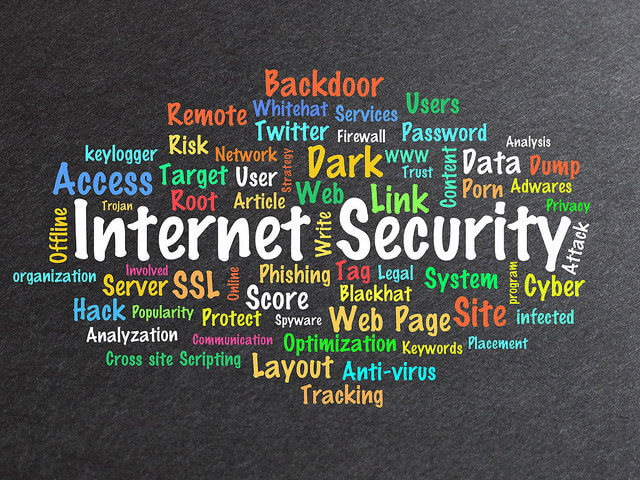What is Internet Security?
Internet security is a branch of computer security that includes several security measures implemented to ensure the security of online transactions. In the process, it prevents security attacks on browsers, networks, operating systems and other applications. Today, businesses and governments are more concerned about secure cyber-attacks and malware coming from the Internet. The main goal of Internet security is to establish specific rules and regulations that can hijack attacks from the Internet.

Internet security is based on specific resources and criteria for the protection of data communicated or transferred online. Security techniques include different types of encryption, such as Pretty Good Privacy (PGP). In addition, other features of a secure Web configuration may include firewalls that prevent unwanted and anti-spyware, anti-malware and anti-virus traffic from networks or devices to view online traffic for malicious file attachments.
The excellent security of the Internet protects financial and other details from what is controlled by the servers and network equipment of a company or organization. Insufficient Internet security can cause all corporate data (financial or confidential) to be lost through the web.
Web threat
A Web threat is a threat used by the World Wide Web to facilitate cybercrime. Web threats use different types of malware and fraud, which use all HTTP or HTTPS protocols, but can also use other protocols and components, such as links in email or instant messages, malware attachments, or servers that access the Web. They benefit cyber criminals by stealing information for the next sale and helping to absorb the infected computers in the botnets.
Web threats represent a wide range of risks, including financial damage, identity theft, loss of confidential information / data, theft of network resources, altered brand / staff reputation, and consumer confidence erosion in e-commerce. Online banking
Common threats to consider
Know the latest online scams and know what you need to know to surf the Internet safely.
Botnet: If you’ve never heard of a botnet, chances are they’re not detected.
What they are: a collection of software robots, or “robots”, that create an army of infected computers (called “zombies”) controlled remotely by the creator. Yours may be one of them and you may not even know it.
What they can do:
- Send spam emails with virus attachments.
- Spreads all types of malware.
- The computer can be used as part of a denial of service attack against other systems.

Hacking: Hacking is a term used to describe actions taken by someone to gain unauthorized access to a computer. The availability of online information on tools, techniques and malware makes it easier for non-technical people to perform malicious activities.
What is it: This is the process by which cybercriminals have access to your computer.
What they can do:
- Search for weak points (or pre-existing errors) in your security settings and use them to access your information.
- Install a Trojan horse, offering a backdoor to hackers to enter and search for your information.

Malware: Malware is one of the most common ways to infiltrate or damage your computer.
What it is: malware that infects your computer, such as computer viruses, worms, Trojan horses, spyware and adware.
What they can do:
- It intimidates you with security software, which usually an emerging message is telling you that your computer has a security problem or other false information.
- Reformat your computer’s hard drive to lose all your information.
- Edit or delete file.
- Stealing sensitive information.
- Send e-mail to your name.
- Take control of your computer and all the software that runs on it.

Spam: Spam is one of the most common methods of sending and gathering information from trusted people. Canada has new anti-spam legislation that provides more information on: www.fightspam.gc.ca
What it is: the massive distribution of unsolicited messages, advertising or pornography to addresses easily accessible on the Internet, through sites such as social networks, commercial websites and personal blogs.
What they can do:
- It annoys you with unwanted junk mail.
- Create a burden for communication service providers and businesses to filter e-mails.
- Phish for your information by trapping it to follow the links below or enter details with offers and promotions that are very nice to be true.
- Provide a vehicle for malware, scams, fraud and threats to your privacy.
Types of Internet security devices and business software
Today it is necessary to have a variety of Internet security devices and tools that can be used by companies and government agencies. One type should help detect the intrusion, while the other should help prevent the intrusion. These tools will greatly help IT staff recognize problems and protect computer networks from threats.
Sophisticated programs are designed to recognize a variety of threats and avoid attacks, respectively. The whole process includes detection of viruses, spyware, malware, worms, etc. The detection tools monitor the system carefully and trigger the alarm so that the system team can investigate the problem when malicious activities occur on the network. On the other hand, prevention systems (antimalware systems) allow real-time monitoring and have the potential to prevent attacks.

Internet security products
Antivirus
Antivirus software and Internet security programs can protect a programmable device from attacks by detecting and removing malicious software; Antivirus software was primarily a shareware in the early years of the Internet. Several free Internet security applications to choose from for all platforms.
Password managers
A password manager is a software application that helps a user memorize and organize their passwords. Password managers typically store encrypted passwords, which require the user to create a master password, a unique, ideally strong password that allows the user to access the entire password database from top to bottom.
Security suite
The so-called security suites were released for the first time in 2003 (McAfee) and contain a series of firewalls, antivirus, antispyware, etc. They also offer protection against theft, control of the security of portable storage devices, Internet browsing, anti-spam cloud, file shredder or security decisions (pop-up replies) and many are free.
loading...
loading...
